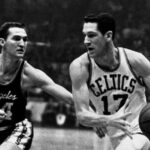John Steinbeck’s “East of Eden” is more than just a novel; it’s an epic saga that delves into the depths of human nature, morality, and the timeless battle between good and evil. This masterpiece, often considered Steinbeck’s most ambitious work, continues to captivate readers with its rich characters, profound themes, and the sweeping backdrop of California’s Salinas Valley. Let’s embark on an exploration of this literary giant, understanding why “East of Eden” remains a relevant and powerful read for contemporary audiences.
A Journey Through Generations: The Trask Family Saga
At its heart, “East of Eden” is a generational novel tracing the tumultuous history of the Trask family. From the enigmatic patriarch Cyrus Trask and his contrasting sons, Adam and Charles, to the subsequent generation of Cal and Aron, Steinbeck masterfully crafts characters that are deeply flawed, intensely human, and utterly unforgettable. The narrative unfolds against the backdrop of significant historical events, mirroring biblical themes and exploring the repetition of patterns across generations.
The Dichotomy of Brothers: Adam and Charles, Cal and Aron
The brotherly relationships in “East of Eden” are central to its thematic exploration. Adam and Charles Trask embody contrasting personalities, shaped by the absence of a maternal figure and the complex influence of their father. Adam, the idealistic and often passive brother, and Charles, the pragmatic and resentful one, lay the foundation for the next generation’s struggles.
This dichotomy is mirrored in Adam’s sons, Cal and Aron. Cal, much like Charles, grapples with feelings of inadequacy and a perceived inherent darkness, constantly striving for his father’s approval. Aron, like Adam in his passivity, is idealized and seen as inherently good, creating a different kind of tension and complexity. Steinbeck expertly portrays the intricate dynamics between siblings, highlighting the love, jealousy, and misunderstanding that can define these bonds.
Cathy Ames: Unveiling the Enigma of Evil
No discussion of “East of Eden” is complete without acknowledging Cathy Ames (or Kate Albey), one of literature’s most chilling and complex antagonists. Cathy is presented as a character embodying almost pure evil, devoid of conscience and driven by self-interest. Steinbeck’s portrayal of Cathy challenges readers to confront uncomfortable questions about the nature of evil: Is it inherent or learned? Can true evil exist within a human being?
Despite her monstrous nature, Steinbeck avoids caricature. He delves into Cathy’s psychology, hinting at the possible origins of her depravity, making her both terrifying and disturbingly believable. Her actions and choices propel much of the plot and serve as a stark contrast to the other characters’ struggles with morality.
Lee: The Heart of Wisdom and Family
In contrast to the turbulent Trask lineage and the darkness of Cathy, Lee, the Trask family’s Chinese servant, emerges as a beacon of wisdom and moral compass. Lee is far more than a servant; he is an integral part of the family, offering insightful counsel, unwavering loyalty, and a profound understanding of human nature.
Lee’s character challenges the societal prejudices of the time, portraying a person of color with intelligence, depth, and dignity. His conversations with Adam and later with Cal are pivotal in guiding them towards self-awareness and understanding the central theme of “Timshel.” Lee’s journey and his choice to return to the Trasks after attempting to start his own life underscores the chosen family theme and the deep bonds of affection that transcend societal roles.
Themes that Resonate Through Time
“East of Eden” is rich with thematic depth, exploring ideas that continue to resonate with readers across generations.
The Enduring Battle of Good and Evil
The most prominent theme is the timeless struggle between good and evil. Steinbeck doesn’t present this as a simplistic dichotomy but rather explores the complexities within individuals. Characters are not purely good or evil; they grapple with both tendencies, making choices that define their moral trajectory. The novel suggests that the capacity for both good and evil resides within each person, and the true battleground is within the human heart.
Timshel: The Power of Choice and Free Will
Central to “East of Eden” is the Hebrew word “Timshel,” which translates to “Thou mayest.” This concept, explored deeply through Lee’s character and his discussions with Adam and Samuel Hamilton, emphasizes the power of choice and free will. “Timshel” suggests that while humans may inherit predispositions or face difficult circumstances, they are not predetermined to follow a specific path. They have the agency to choose good over evil, to overcome their flaws, and to shape their own destinies. This empowering message of personal responsibility is a cornerstone of the novel’s enduring appeal.
Family, Love, and Isolation
Family dynamics, in all their messy and complicated glory, are a constant focus in “East of Eden.” The novel examines various forms of love – paternal, fraternal, romantic – and the devastating consequences of its absence or distortion. Characters yearn for connection and belonging, often struggling with isolation and misunderstanding. The Hamilton family provides a contrasting model to the Trasks, showcasing a more functional and supportive family unit, highlighting the importance of community and genuine connection.
Why “East of Eden” Still Matters Today
Decades after its publication, “East of Eden” continues to be a relevant and impactful read. Its exploration of fundamental human questions about morality, choice, and the search for meaning remains timeless. Steinbeck’s masterful storytelling, his creation of deeply human characters, and his exploration of universal themes ensure that “East of Eden” will continue to resonate with readers for generations to come. It’s a book that invites introspection, encourages empathy, and ultimately leaves the reader contemplating their own capacity for “Timshel” – the choice to be better, to overcome, and to shape their own “Eden.”


